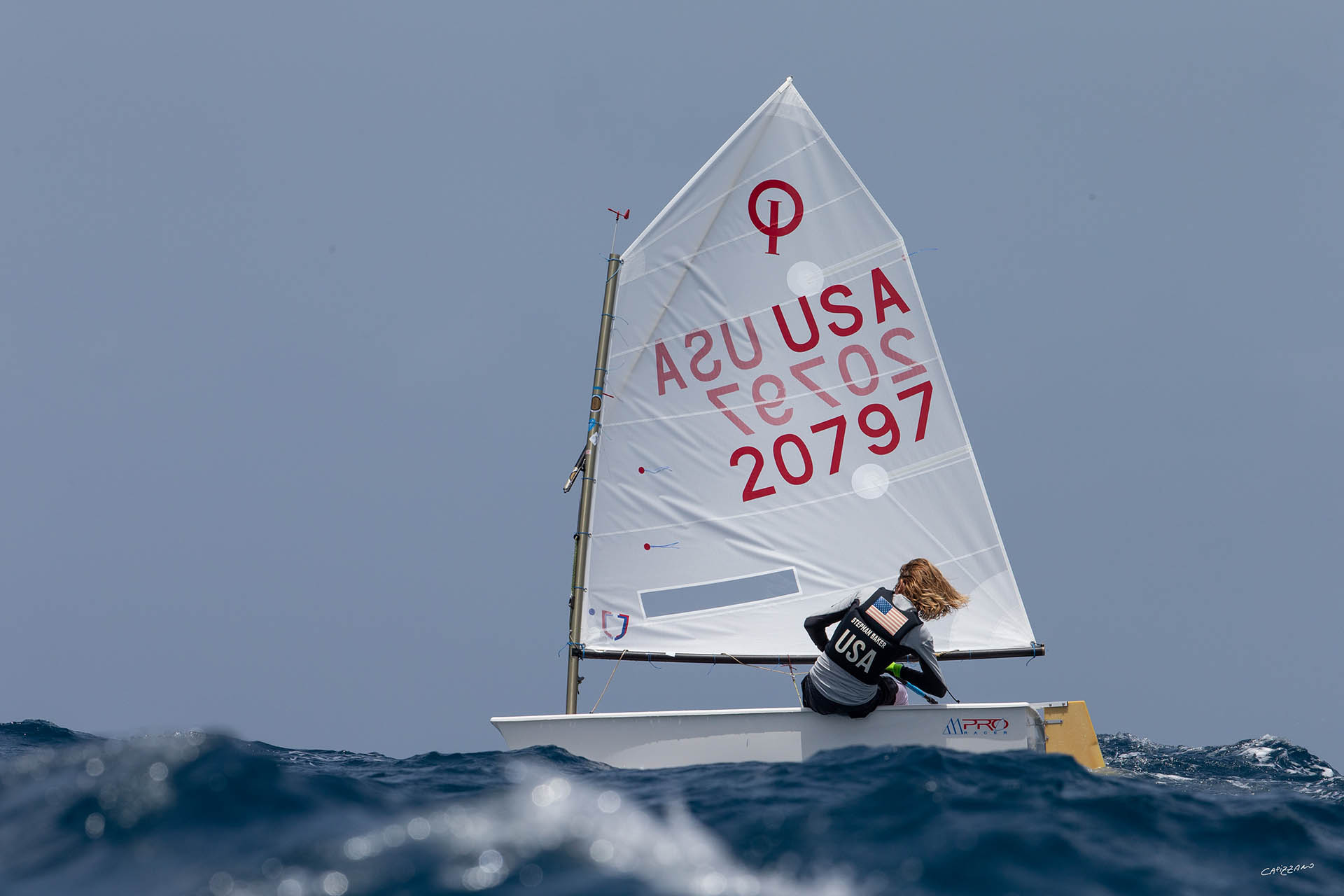For this week’s article, we teamed up with a good friend and former teammate, Kevin Broome at American Yacht Club.
We certainly know many of you are eager to get on the water sailing, so please check your local laws and regulations.
With some of the waterways opening up in various states to recreational boating, we consequently thought an article on solo sailing would be fitting.
In this article we will discuss some basic safety and drills that will get you on the water!
First, Prior-Day Safety Check
First, there are key solo sailing safety items you want to check the day before you hit the water:
- Rig up and take three steps back to look over the whole boat, For example, ask yourself, “Does anything look funny or out of place?”
- Boom bridal – Make sure it’s tight.
- Airbags tested a day before to make sure they stay inflated
- 2 bailors – both tied in
Solo Sailing Tip:
On the day before you sail, rig up and take three steps back to look over the whole boat, does anything look strange or out of place?
5. Daggerboard- Make sure it has a lanyard
6. Rudder – Make sure the retaining clip is not bent and the rudder will stay secured
7. Praddle with lanyard
8. Mast lock or line to tie the mast in
9. Lastly, ditty bag with spare stuff is clipped into your boat
Next, before you push-off from shore:
- File a float plan! Tell someone where you are going if solo sailing and when you expect to be back. Confirm that your boat, gear, and clothing are ready to go!
- It’s always good to sail with a buddy or someone watching you from shore.
- Then, if possible, have a VHF radio or mobile phone in a dry bag attached to the boat.

4.Consider your launching area. Launch from an area that has side shore or wind pushing you back towards home, because it’s not a good idea to sail on your own with wind or current pushing you away from shore. Similarly, try to train in an area that is slightly upwind of your final destination, so if anything goes wrong you drift back to shore.
5. Certainly consider a spotter – If your parents have a good set of binoculars, get them out and place them where they can be quickly used.
6. If you can find a friend to sail with make sure you both stay at least 6 feet apart and wear buffs when sailing, rigging, or if in close proximity to each other. In addition, if you can recruit a parent to kayak or follow you in another boat that might be fun as well!
7. Send us some videos so we can see you enjoying your optimist!
Finally, remember: If in doubt, don’t go out.
Next, on the water drills:
For your first session back on the water take it slow its better to not use up all your energy on the first time out. Consider choosing 1-3 goals for that day’s session and pace yourself.
Sailing tired, especially by yourself isn’t smart.
Often, its better to do things well when you are learning or rediscovering than completing them sloppily because you are tired.
Form and good habits should always be a priority.

- On the water gear triple check! Its better to find out things are broken/missing before you sail too far away.
- Reaching figure 8’s transitioning into smaller and smaller courses. Goal: Warm up and shake the rust off, and remember how to steer and move in the boat again.
- Sailing a small triangle using existing buoys or winter sticks to get some upwind and downwind practice in a confined space. Goal: Start remembering how to read the tell tales and keep your head out of the boat watching for windshifts obstacles.
- Elvstrom Drill: Circle a mark/buoy a number of times, pause, and then unwind the string (sail the other way). Likewise, an advanced version would be 20 times to port, 20 times to starboard and 20 times to port. Goal: Remembering to steer with body weight, sails and rudder. As a result, the goal is to progressively use less and less rudder.
- Red light, green light! Practice starting and stopping going on a close hauled course. Start sailing upwind, then stop your boat for 5 seconds and start sailing back upwind again. Goal: Remembering how to accelerate and minimize sliding while accelerating.
- Windward leeward course. Pick 2 buoys or marks and practice a 4-5 minute upwind course.Goal: practice finding laylines, straightline speed, tacking and gybing.
Final thoughts:
Consider ending the session the same way you started, perhaps with a reaching figure 8 or the Elvstrom drill to compare where you started the day to how you have ended the day
Then, when you are off the water take a few notes in a notebook on what you want to fix on your boat, what you did well today and what you’d like to work on for next time. As a result, you’ll be able to document areas of improvement.
—————–
We are proud of all of our sailors that are doing their part to keep everyone healthy!
We know this is a weird time for everyone and we would love to hear how you are having fun and getting ready for the sailing season.
If this article was of interest to you please let us know, because we are always looking for good ideas on topics to write about!
Every sailor wants to have an edge when it comes time to compete, and now you know how to get it.